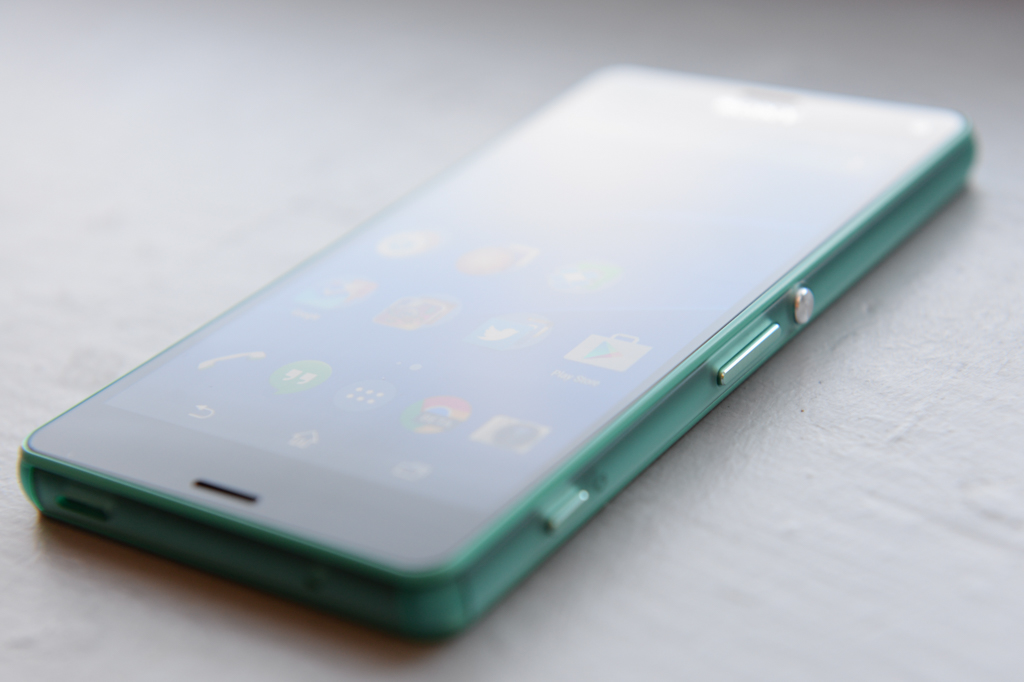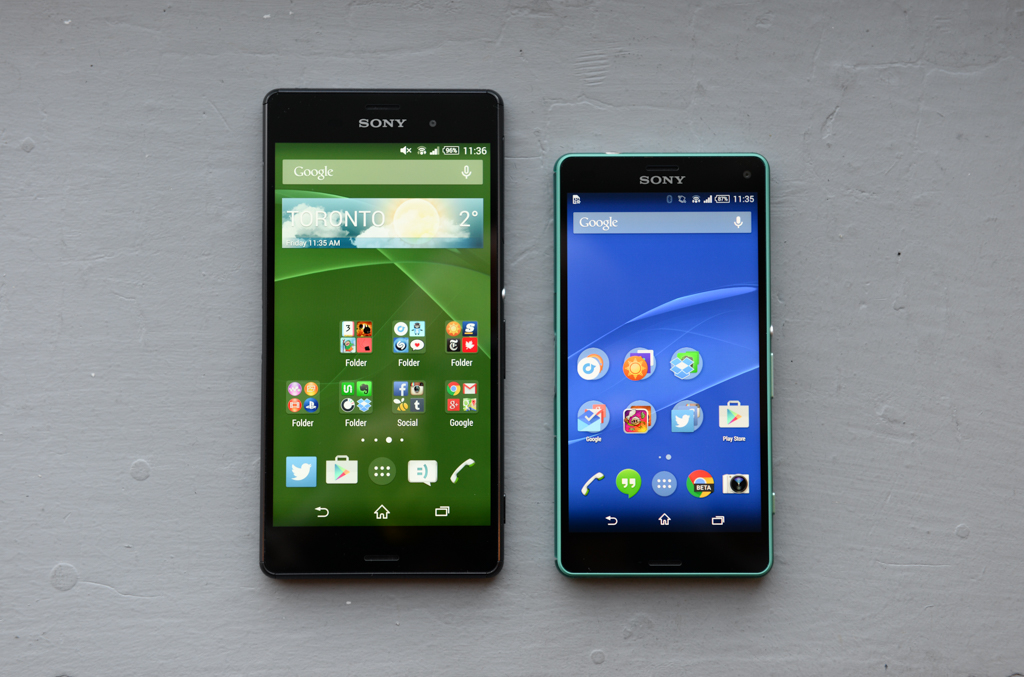
Previously, on MobileSyrup:
“Sony’s Xperia ZL is an excellent smartphone. But, like I said about the Xperia T, it’s going up against the most competitive smartphone market in history.” April 6th, 2013
“The Xperia Z is a gorgeous smartphone – Sony’s best to-date. The all-glass design is something that any user would be proud to hold, but one must be careful not to drop it. Other than aesthetics, there is no real reason to choose the Xperia Z over the ZL, which is cheaper, smaller and available across more carriers. If waterproof is your thing, then go for it; if not, the ZL, with its IR blaster and camera shutter button, is actually a comparable smartphone.” August 8th, 2013
“Ultimately, there is very little for which to criticize Sony this time around. The Xperia Z1 may not be as compact as the G2, nor as immediately feature rich as the Galaxy S4 or as beautiful as the HTC One, but it’s a fantastic all-round smartphone.” November 5th, 2013
“[The Xperia Z2] is easily Sony’s best smartphone to date, and the combination of an excellent screen, decent speakers, unobtrusive software, good app design and premium content makes it a compelling option, despite its carrier exclusivity. The sad part is that it will likely go relatively unnoticed next to the Galaxy S5.” May 4th, 2014
This is the fourth Xperia Z-something review I’ve written in under 18 months.
To say that Sony’s mobile division is prolific would be a gross understatement. But whereas the products themselves have steadily improved, the company’s financial outlook has not: it will write off nearly $1.6 billion in unsold smartphone inventory for 2014, and its 2015 outlook is not looking much better. But just because the phones are not selling in huge quantities doesn’t mean the phones themselves aren’t great.
Today, we’re pairing Sony’s latest devices, the Xperia Z3 and Xperia Z3 Compact, and looking at how they fit in with Sony’s smartphone ecosystem. Considering the two predecessors are still on sale at Rogers and Bell respectively, are the Z3s worth looking at? And with the debut of the Nexus 6 and other Lollipop devices on the horizon, does Sony’s typically slow update process bode poorly for the Xperia brand?
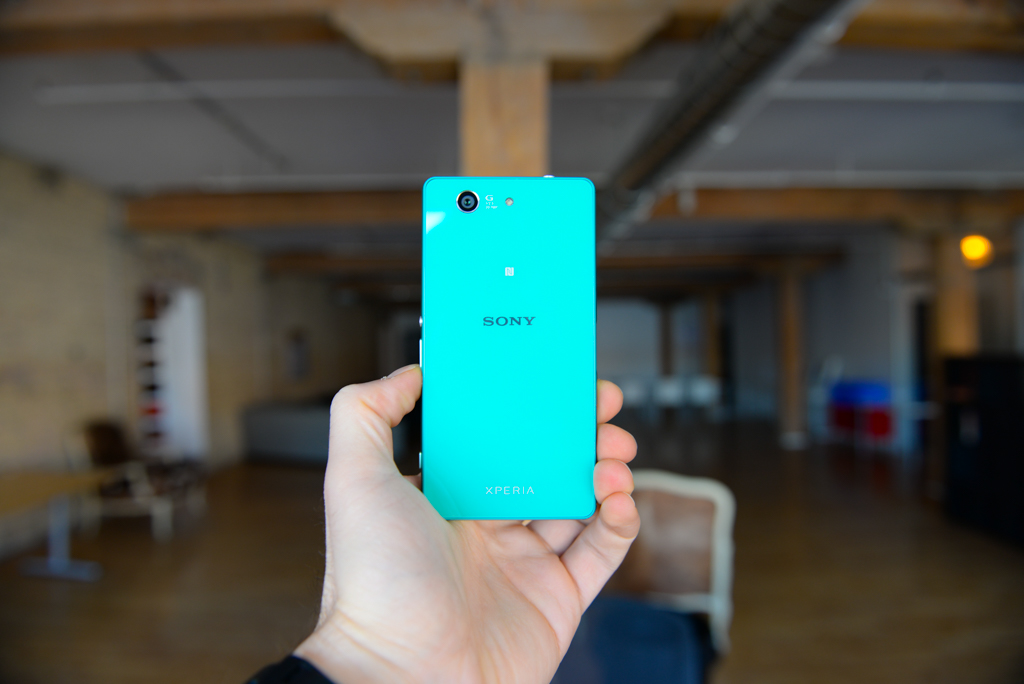
Specs
Xperia Z3
- Android 4.4.4 KitKat
- 5.2-inch 1920 x 1080 pixel LCD display
- 2.5GHz quad-core Snapdragon 801 SoC
- 3GB RAM / 16GB internal storage (expandable)
- 20.7 MP Exmor RS (IMX220) camera w/ 25mm wide-angle F2.0 lens
- 2.2MP front-facing camera
- 4K video capture
- 3,100mAh battery
- IP68 certified, dust proof / water resistant to 1m for 30 min
- 146 x 72 x 7.3 mm
- 152 grams
- LTE (Bands 1, 2, 3, 4, 5, 7, 8, 13, 17, 20)
Xperia Z3 Compact
- Android 4.4.4 KitKat
- 4.6-inch 1280 x 720 pixel LCD display
- 2.5GHz quad-core Snapdragon 801 SoC
- 2GB RAM / 16GB internal storage (expandable)
- 20.7 MP Exmor RS (IMX220) camera w/ 25mm wide-angle F2.0 lens
- 2.2MP front-facing camera
- 4K video capture
- 2,600mAh battery
- IP68 certified, dust proof / water resistant to 1m for 30 min
- 127.3 x 64.9 x 8.6 mm
- 129 grams
- LTE (Bands 1, 2, 3, 4, 5, 7, 8, 13, 17, 20)

Design(s) & Display(s)
There isn’t much between the Xperias Z3: they’re both compact for their size classes, despite the specific classification of the smaller unit, and like their predecessors adorned on both sides with glass.
The larger Xperia Z3 takes a sharp turn from the Z2*: the corners are softer, resulting in a less boxy chassis. Its aluminum is also more carefully machined, resulting in a more attractive finish. The smaller version is all-plastic on the sides, but feels only moderately less expensive. Both are profoundly well-constructed, but that extra cost goes to better use on the large Xperia Z3: the flaps that maintain the device’s IP68 rating are both more manageable and attractive.
Being 1.3mm thinner than the Compact also gives the Xperia Z3 the impression of being a true flagship, and more in line with devices like the Note 4 and iPhone 6. Ironically, the Z3 is considerably more portable than the Z1 and Z2, and that it took Sony this long to finally get its affairs in order is frustrating.

If the Xperia Z3 is the iPhone 6 (it’s roughly the same size), the Z3 Compact is the iPhone 5s. It’s easy to use in one hand, light, portable and airy. Its 4.6-inch screen size is just right, and the screen resolution not obviously lower than its larger counterpart. While next to one another it’s easy to notice the higher density of the Z3, the Compact doesn’t feel “mini” the way similarly marketed devices do from Samsung, HTC and LG. Screen size and resolution are not sacrificed, they’re scaled.
In fact, subjectively the Z3 Compact’s screen performs better than the Z3’s, which has terrible default white balance. Viewing angles and brightness are also better on the smaller device. Both are leaps and bounds better than their predecessors, the Z1 Compact and Z2 respectively, and are finally competitive with other devices in their size class. Specifically, the Z3s find Sony finally shipping LCD panels with good viewing angles and generally pleasing colour reproduction.
Both devices have the ability to adjust white balance through the Settings/Display menu — a good thing, because the default values are far too blue on the Z3, and too red (though considerably more accurate) on the Compact.
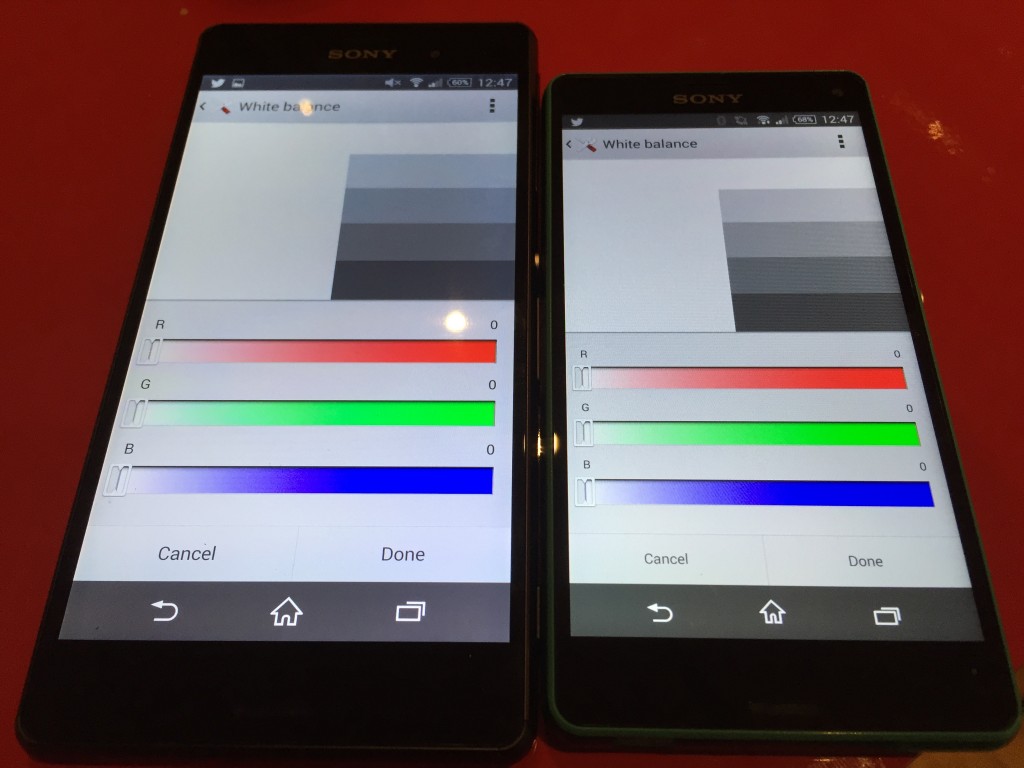
(I found the following Settings pleasing to my eyes, but your mileage may vary:
Xperia Z3: R 145, G 120 B 0
Xperia Z3 Compact: R 84, G 110, B 111)
Both devices support double-tap to wake, Glove mode (high sensitivity) and Smart backlight control, which is Sony’s equivalent to Samsung’s Smart Stay. Glove mode, however, is largely useless, since sensitivity is not just heightened but exaggerated; false positives quickly became the norm, even with the thickest Canadian mitts.
Neither device looks particularly remarkable, in the traditional sense. They’re relatively thin and light for their sizes, still borne of Sony’s unflinching design story that began with the Xperia Z in early 2013. But there is a particular elegance to the larger Z3 that’s been missing from Sony’s smartphones, a coming together for the first time of all the right parts into a cohesive whole. It only took four iterations to get here.

The Xperia Z3 Compact is stranger still, largely because users have grown used to diminutive devices being underpowered and appended with a ‘mini’ tag. Sporting the same internals and the same software (like, exactly the same), only a moderately smaller battery differentiates them. As I said, I don’t find the lower screen resolution to be a disadvantage — a 1080p display on a 4.6-inch device would be a Retina-busting 479 pixels per inch — and I like the form factor for the same reasons I loved the original Moto X when it was released.
Using the Xperia Z3 Compact for a week was a joyous, nostalgic experience. As slippery as the rear glass can get on a cold day, being able to reach every part of the screen without readjusting the device is such a relief. It’s also worth recalling that less than two years ago, a 4.6-inch screen was considered quite large; today, it fits into the “mini” category.”
I enjoyed using the Xperia Z3 Compact better than its larger counterpart, but that’s a personal preference. I reckon most folks will prefer the Z3’s larger, higher-resolution display with its robust metal frame. You can’t go wrong either way. You will, however, want to get a case: the glass backs are slippery, both in the hand and on sloped, flat surfaces. At dinner one night, I turned my head for a second only to find my Xperia Z3 Compact on the floor, mostly unharmed; the 10°-or-so offset had combined with gravity to prove the device’s foil.
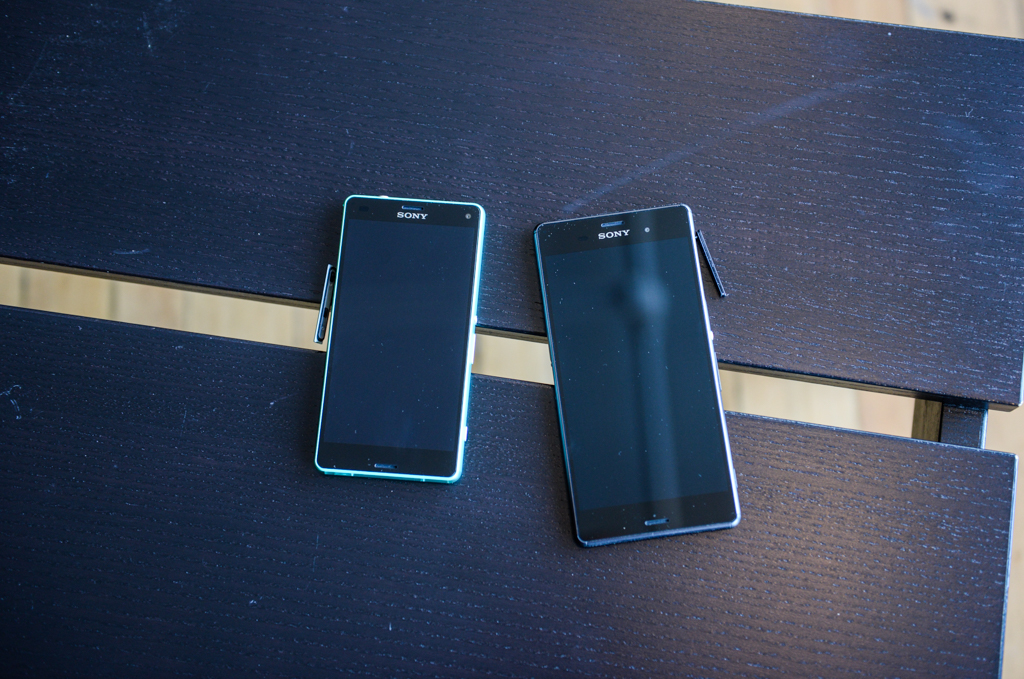
Performance & Battery Life
Both the Xperia Z3 and Xperia Z3 Compact share a 2.5Ghz Snapdragon 801 SoC, but the larger device comes with 3GB of memory to the Compact’s 2GB. The real-world difference is negligible, and I found both devices to run Android 4.4.4 expediently.
The Xperia Z3 runs the same Snapdragon 801 chip as its immediate predecessor, though it’s an upgraded variant clocked 200MHz higher. The Compact shares the same silicon, and both devices fly through apps and games. Neither device is demonstrably faster than the Z1 and Z2, but Sony’s measured upgrades ensure that the experience is (relatively) uncorrupted by bloatware.
I did experience some strange performance bugs, more so on the Xperia Z3 Compact. The devices would get stuck in one orientation, unable to decipher my frustrated shakes back to the other. I often had to restart them to get the accelerometer to cooperate once again.
While I did benchmark the phones, they came fairly close to the scores in the Samsung Galaxy S5 and HTC One M8. What I will say is that the metal body of the Xperia Z3 dissipates heat better than the smaller, plastic Compact, so extended gaming sessions will likely be more comfortable on the flagship.
In terms of battery life, I had a fantastic experience with both devices. While the Xperia Z3’s 3,100mAh boasted slightly longer uptime, both in our subjective daily tests and through benchmarks, the Compact’s 2,600mAh cell proved to be enviable compared to other devices in its size category.
I was easily able to get two days of moderate to high use from the Xperia Z3, and a day and a half from the Compact. The former metric I take for granted: a 3,100mAh battery with Android 4.4.4 is a potent combination. I was more impressed with the Compact, which adds but a millimetre to its frame but wedges a 2,600mAh battery inside, resulting in flagship-like uptime with none of the bulk.
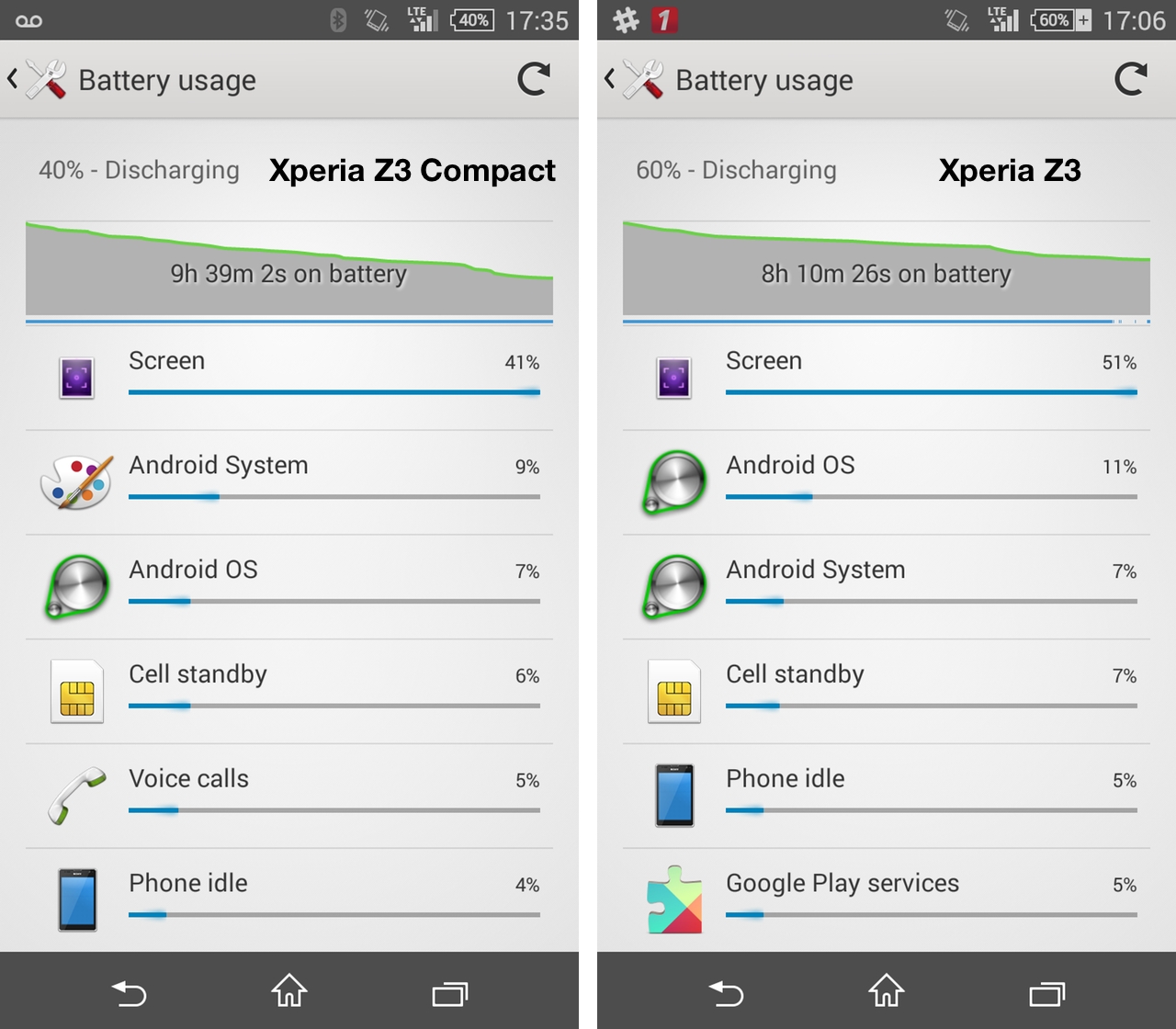
A lot of Sony’s marketing for these devices has revolved around battery life superiority, and that’s true. There are a number of battery-saving features on board, from the Stamina Mode that has been present for a couple of generations, to Ultra Stamina Mode, which is akin to similar features on Samsung and HTC’s flagships.
Then there is Low Battery Mode and Queue Background Data, more features to keep the phone running as long as possible.
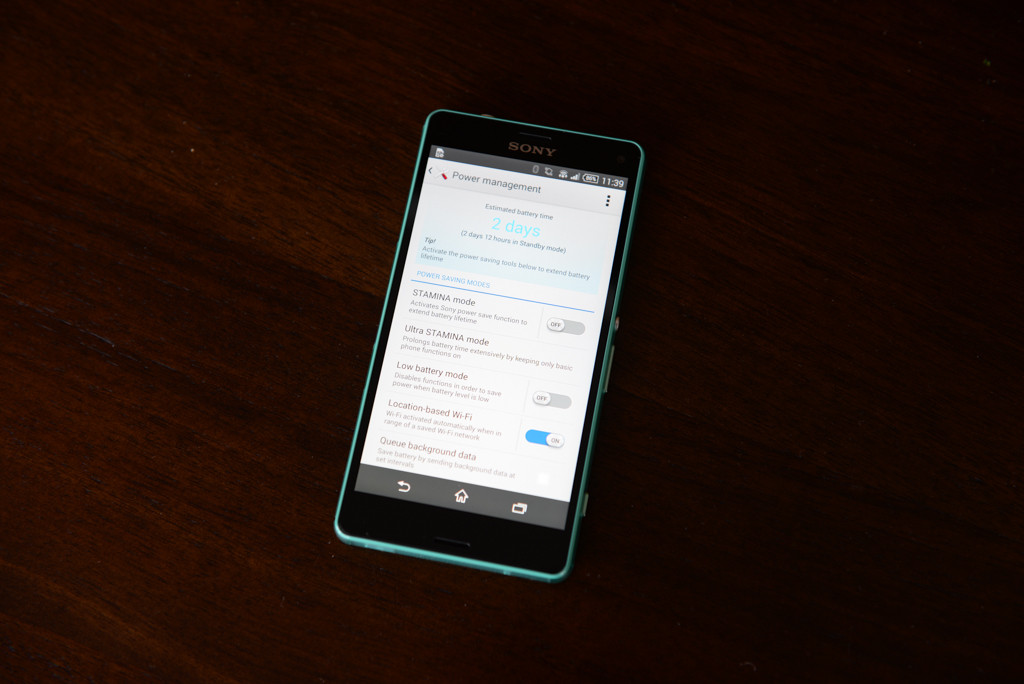
By default, the phone turns off background data updates when the screen is off, leading to an influx of notifications when turned on. This works most of the time, and there’s a whitelist for apps like Hangouts and WhatsApp that need to be real-time, but the takeaway is a couple of extra hours of usage per day. I also raved about Stamina Mode in previous versions of the Xperia Z series, and taken together, it’s possible to eke more than two days of use from the Xperia Z3, and close to two days from the Compact.
It’s also clear that Sony’s software updates have led to greater battery efficiency in general. The Z3 actually features a moderately smaller cell than the Z2 — 3,100mAh to the predecessor’s 3,200 — but manages longer uptime with a faster processor.
Like most aspects of Sony’s upgrade cycle, I’m not delighted that it took this long to get the Xperia line to the point it’s at today, but if you’ve been waiting for the right Sony device to update to, now is your time.

Software
Sony’s Android software has, of late, been tame. It’s not quite stock Android 4.4 KitKat, and there a few too many “value-add” apps that can’t be removed or disabled, but for the most part this is a low-overhead version of the OS you know and love.
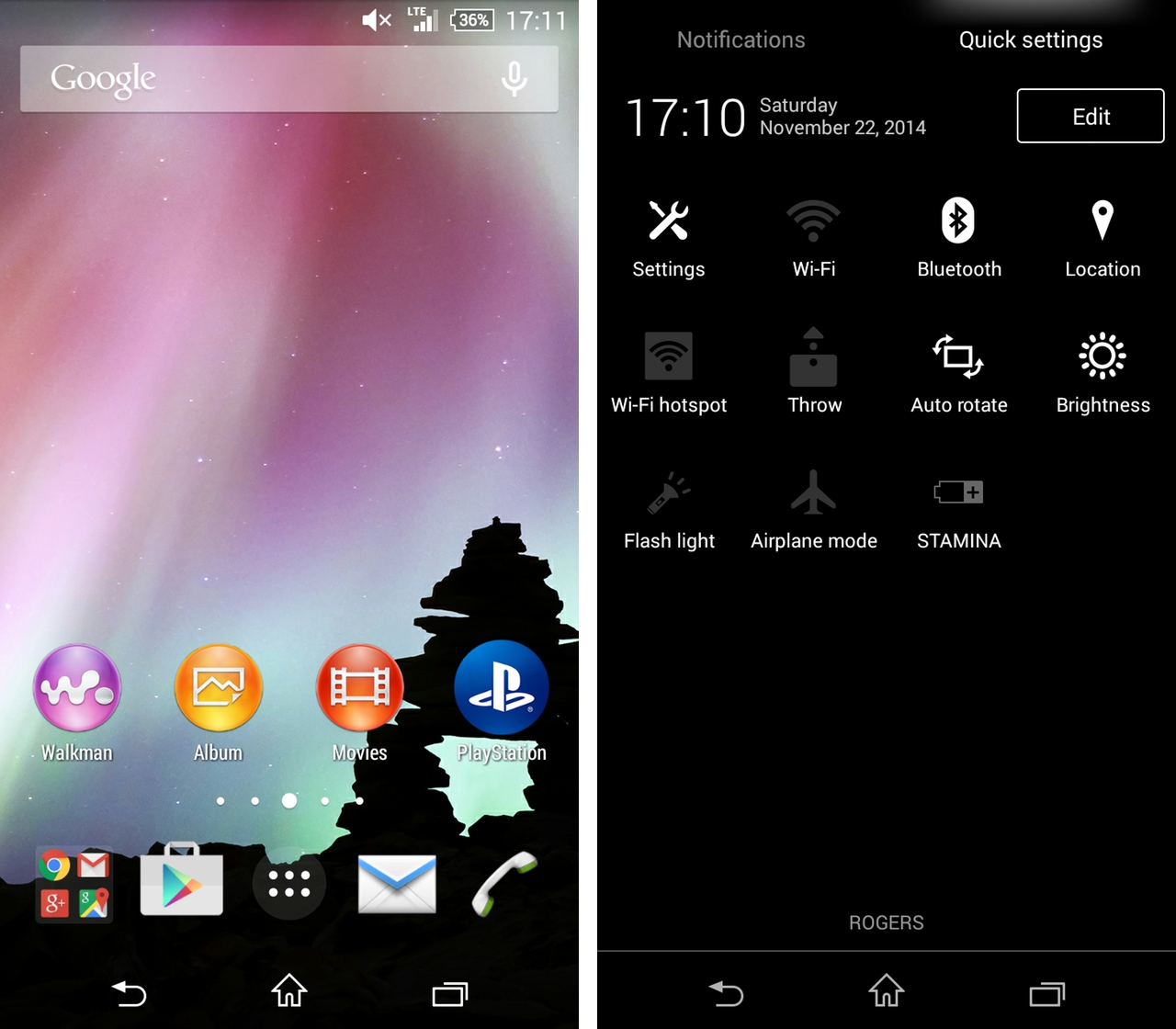
Like the aforementioned battery-saving features, Sony does append some unique features to its Android layer. For example, the Xperias Z3s come with the ability to pair a trusted Bluetooth device to temporarily disable lock screen security, similar to the implementation on Android 5.0 Lollipop. There’s a high-sensitivity Glove Mode, customizable Quick Settings in the notification shade, a double-tap to wake option for when the screen is off and the power button is just too far, and a few more neat quirks.
Sony’s also toned down the overbearing branding of its launcher, bringing it visually in line with Google’s own branded choice.
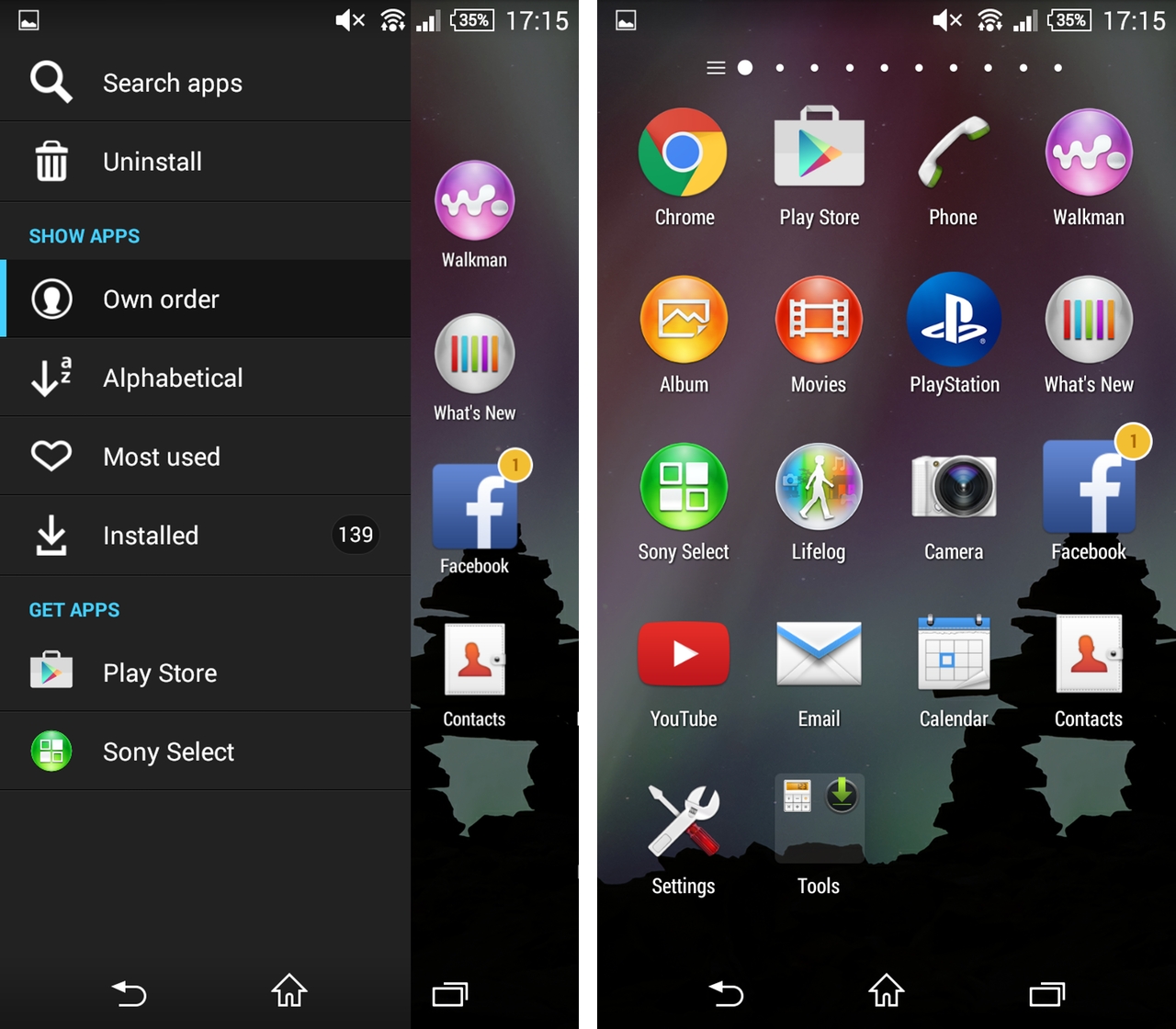
Inside the launcher you’ll still find a bevy of Sony-branded apps, including the not-so-useful What’s New and Sony Select apps, which are redundant in today’s Play Store-focused marketplace. In fact, Sony’s so-called “curated collection” of apps and games inside the Select app merely link into the equivalent Play Store entries.
And while Samsung and HTC have discontinued their various media hubs, Sony, with its huge collection of music artists and movie titles, still peddles its own Music and Video Unlimited services. The former is a Spotify competitor, streaming a wide selection of on-demand music for $9.99/month, while the latter is a simple pay-for-digital-access movie and TV show portal.
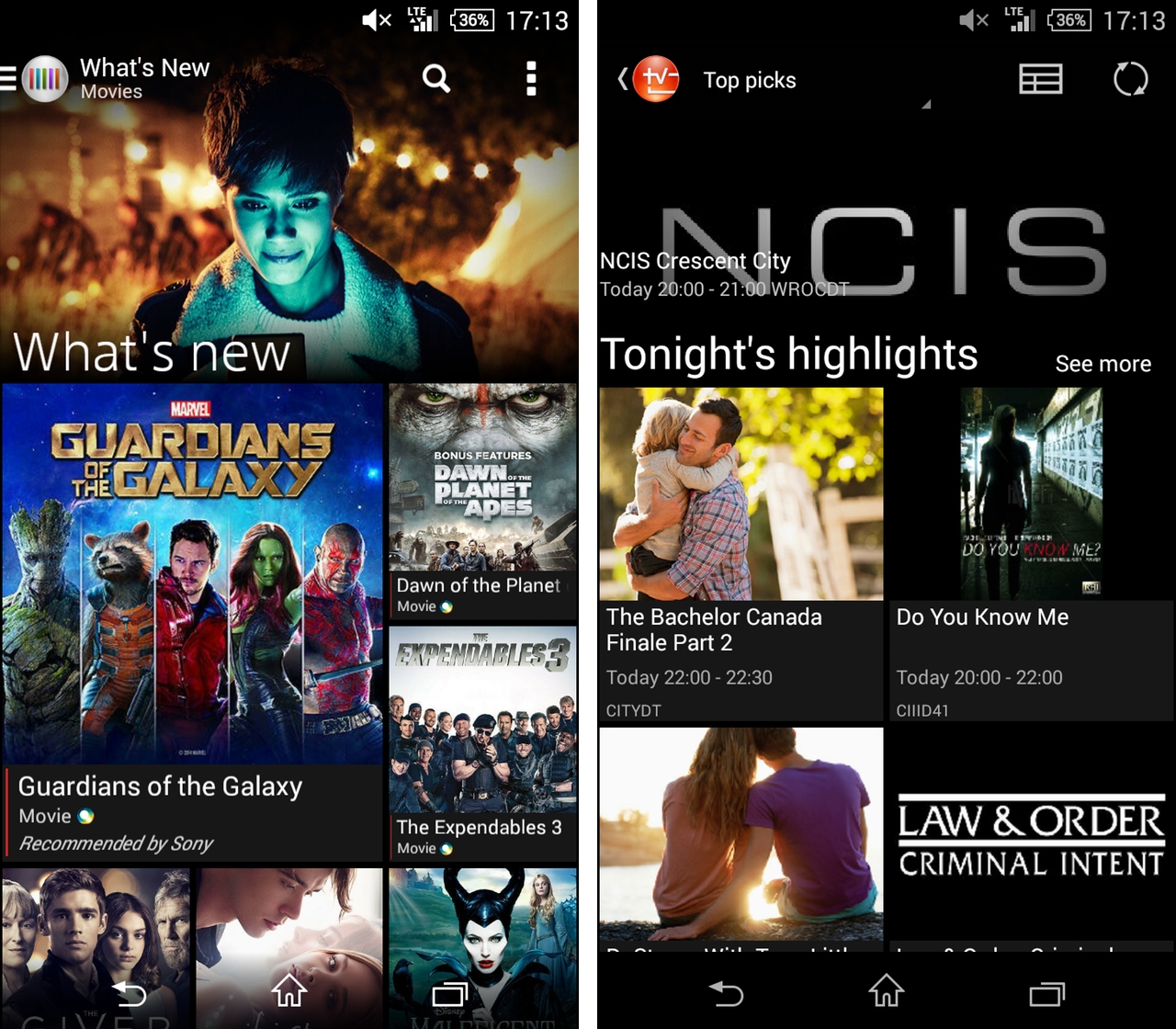
It may appear nearsighted for Sony to continue loading its own app, movie and music hubs on its smartphones, but the company has built up a pretty impressive user ecosystem through its Bravia TV line and PlayStation game consoles, and purchases sync between platforms and screens. Prices are generally competitive for rentals and purchases, but the experience is no better (or worse) than Google Play’s equivalents. Ecosystem redundancy continues to be a problem for Android OEMs in general, but Sony’s ever-present media focus will continue to be used as a differentiator.
In that vein, while PlayStation integration is less pronounced than it used to be, Sony still wants you to know that it controls the world’s best-selling console ecosystem. It’s possible to download PSN games from the Xperia phone, and PS4 Remote Play — the ability to stream games to an Xperia phone or tablet — is an incredible feature that no other device can boast. While it requires a Dual Shock 4 controller, being able to play PS4 games wherever and whenever is a wonderful boost, especially for game fans.

While Sony’s overall Android experience is not remarkably improved over, say HTC’s, its core feature set don’t set it apart, either. There are areas of the OS, like the Gallery, that seem to have been designed by a completely different company than core apps like Phone or Contacts. The blank colours and skeuomorphic textures recall Android 2.3 Gingerbread more than KitKat, and Sony will need to get its act together before the upgrade to Android 5.0 Lollipop, which is expected to begin rolling out in early 2015.
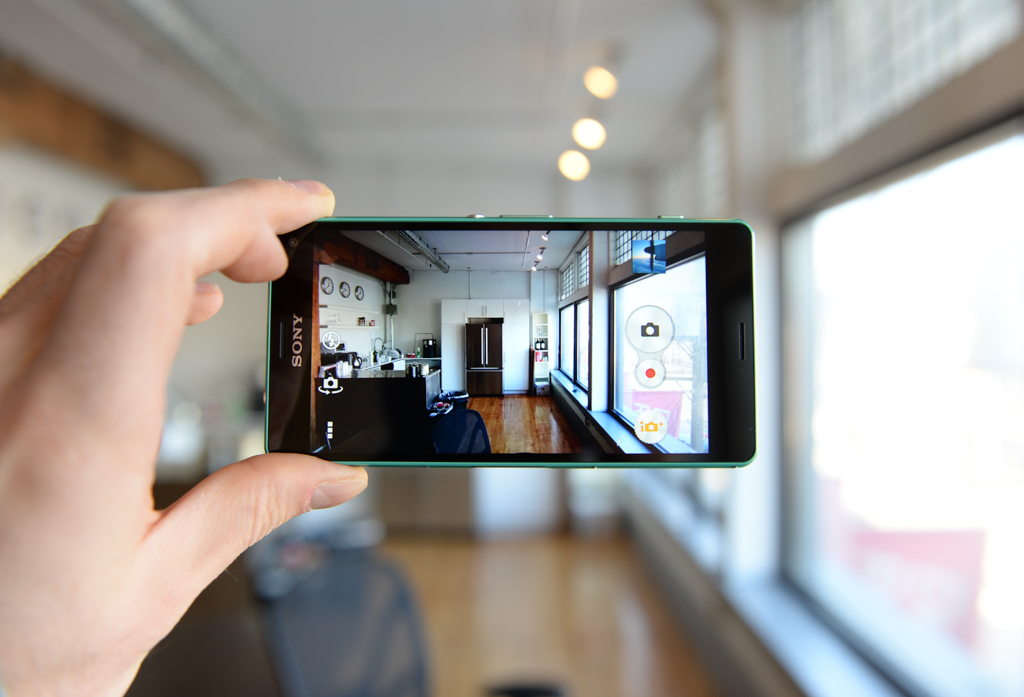
Camera
Both the Xperia Z3 and Z3 Compact have the same 1/2.3″ 20.7MP IMX220 camera sensor as the Xperia Z1, Z1 Compact and Z2. As a result, I didn’t expect a great deal of difference between them.
Sony maintains two upgrades over the Z2: a wider-angle 25mm equivalent lens, and the option of increasing ISO to a mind-blowing 12,800. The first means you can fit more in the shot, and the latter promises better low-light photos (at the expense of grain).
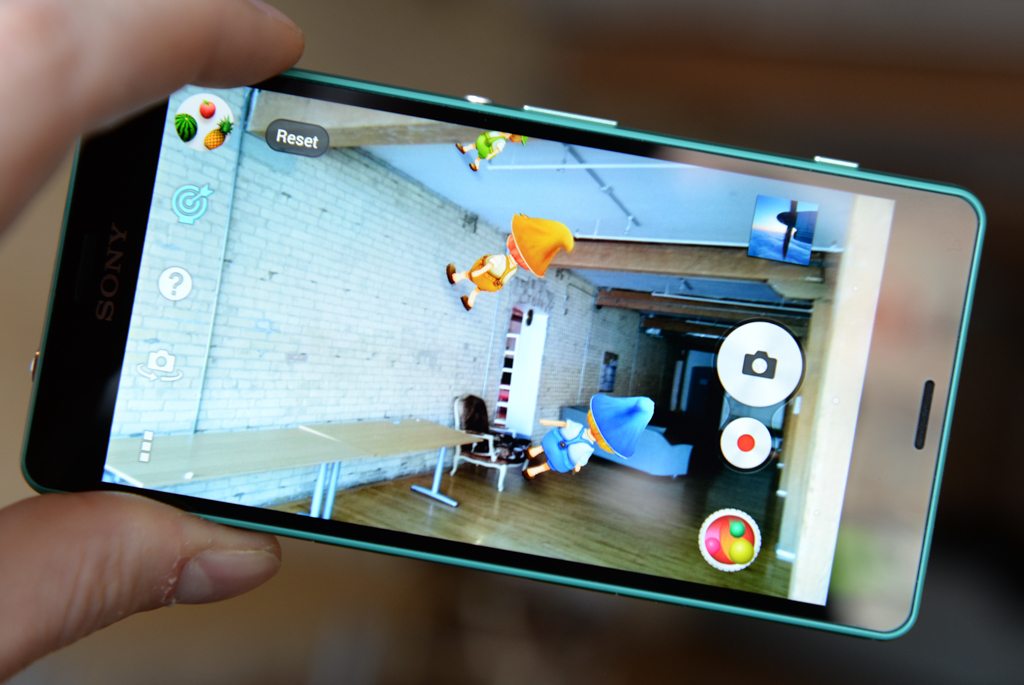
In real-world use, the Xperia Z3 and Z3 Compact boast one of the best camera experiences on Android; there’s a solid two-step shutter button on their right sides, expedient capture speeds and myriad capture options, including a Manual mode that offers every granular setting under the sun. There are augmented reality options for the kids, burst mode for action shots, slow-motion, panorama and lots more. There’s no shortage of options.
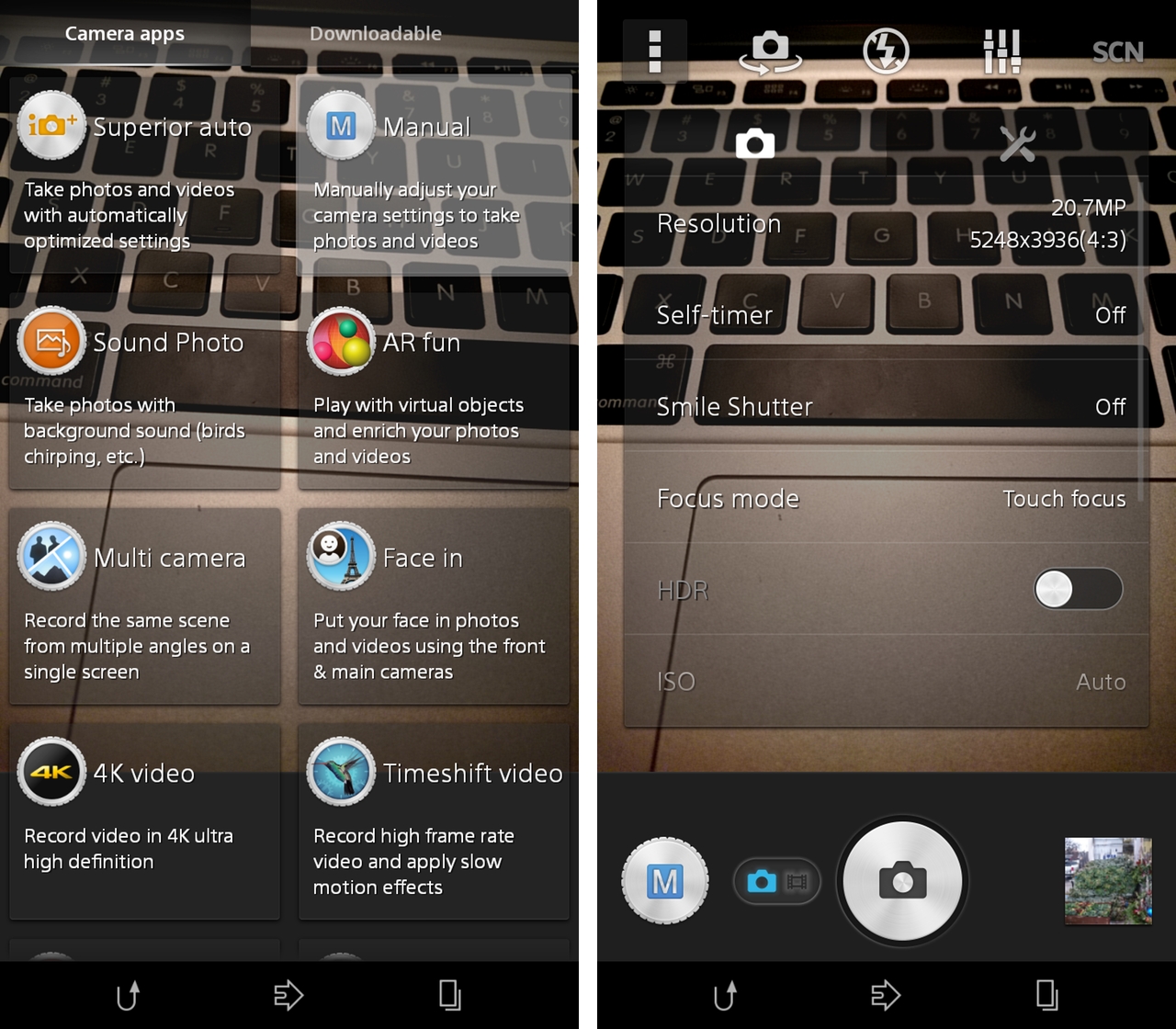
But what most people will end up using is the default Superior Auto mode, which defaults to 8MP and adapts the settings to compensate for various lighting conditions.
On paper, the Xperia Z3 series should offer the best photo quality on Android. Unfortunately, Sony can’t deliver on that promise. While daylight photos have plenty of detail, and the F2.0 lens offers realistic depth of field for a smartphone, the actual end results are often poorly-exposed, mired with grain and poor white balance. It’s a problem I’ve had with Sony’s smartphone cameras for some time, and I was confident the latest devices would fix these issues.
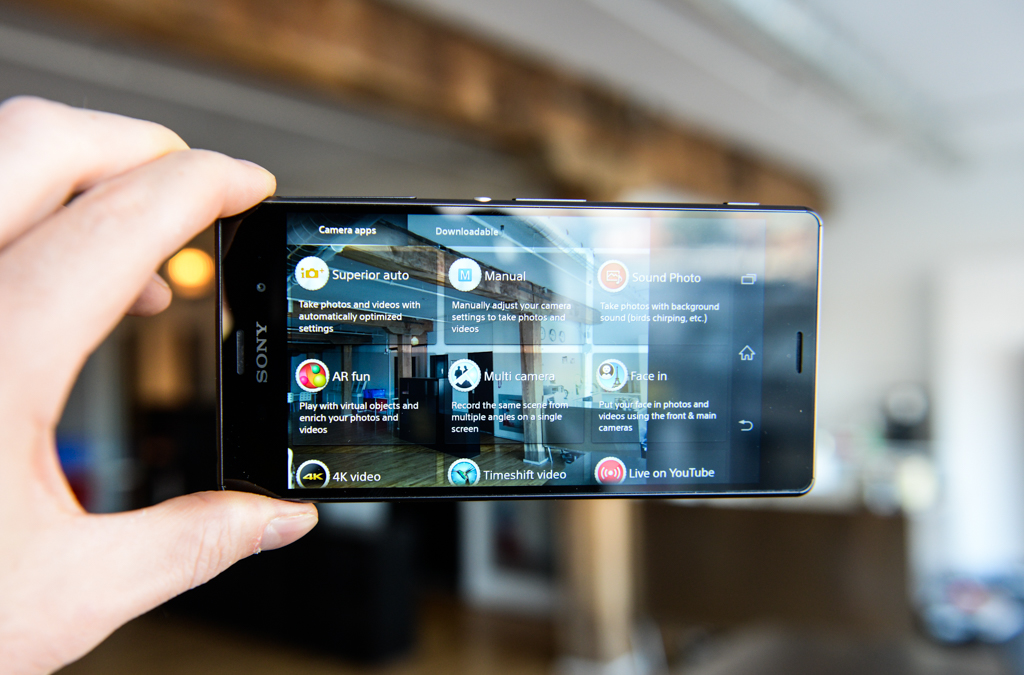
Of course, many of these issues can be fixed in post, and the onboard editing suite is quite capable. Thanks to oversampling — the combining of several pixels into a single one to improve quality in high-resolution sensors — low-light photos are better than many of its competitors like the Galaxy S5, but the Xperia Z3 lacks the optical image stabilization of the iPhone 6 Plus, Galaxy Note 4 or Nexus 6.

While using the app icon to open the camera remembers the last settings, it’s alo frustrating that there is no option to default to Manual mode when using the two-step shutter button to quick launch. There appears to be an option for everything else — why not this one?
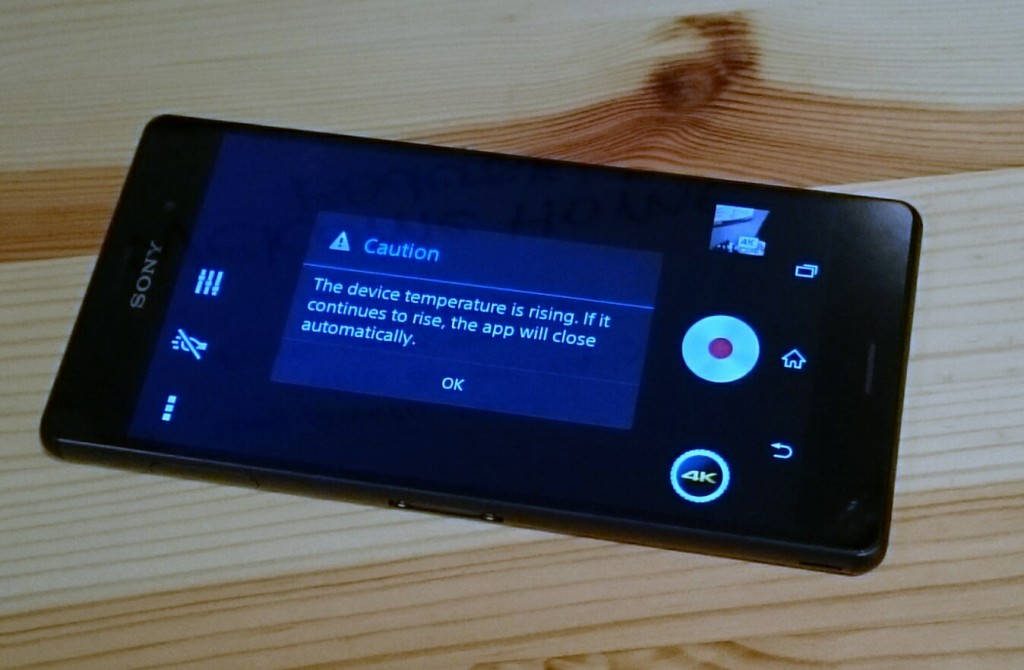
The Xperia Z3 does offer 4K video capture, but there is a thermal limit the device will hit that will prevent further shooting. The 16GB of internal storage is also a potential roadblock here, but there’s an option to save to microSD. Sony’s electronic stabilization fares better on video, which requires less bandwidth and is more forgiving of hand movement, than photo.
Overall, I would say that the Xperia Z3 and its smaller counterpart, which capture identical-quality photos and video, sit right behind the Galaxy S5 in photo quality.
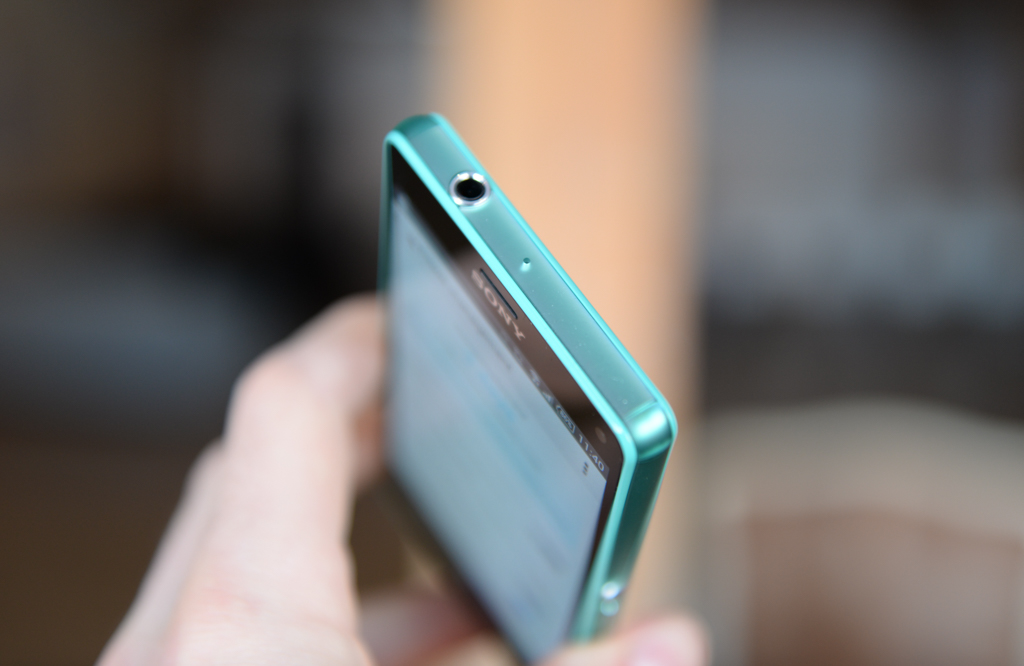
Connectivity
I tested the Xperia Z3 on Rogers and the Z3 Compact on Bell, the latter being an exclusive. With both devices sporting stereo front-facing speakers that go fairly loud, I was happy with the internal and external sound quality. Due to the Compact’s size, however, blasting both speakers actually causes the chassis to vibrate uncomfortably.
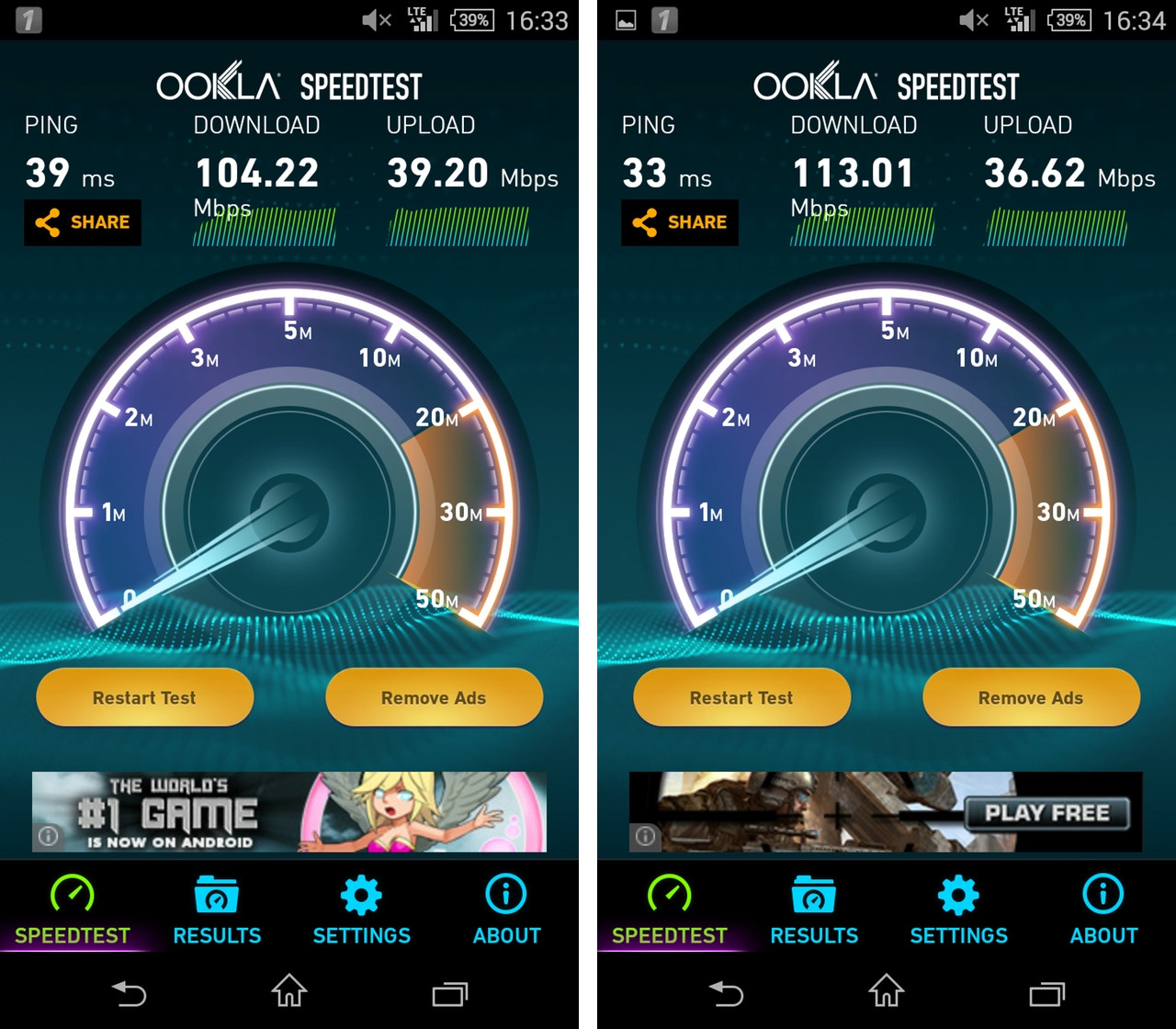
On the Xperia Z3, I was able to achieve the fastest speeds I’ve ever recorded on a smartphone. Over the Rogers LTE network, I recorded upwards of 115Mbps down, which means that I was close to maxing out the 150Mbps theoretical limit of the cell tower. Pretty impressive.
I did have some issues with the placement of the devices’ microphones. Due to their placement on the bottom, and their relatively small sizes, I often found myself having to repeat what I was saying after the person on the other end of the phone complained of “being cut off.” A minor hand adjustment freed the microphone, but it happened too often, on both phones, to be considered isolated.
Competition & Pricing
The Xperia Z3 is Sony’s widest launch in a long time, available on all three major carriers, Rogers, Bell, TELUS, as well as WIND Mobile, MTS and SaskTel for prices between $80 and $180. It is also sold unlocked at Sony stores and online for $700.
The Xperia Z3 Compact, available on contract only at Bell, is a little harder to come by. It’s available at Bell for $80 and unlocked at Sony stores and online for $600.
Some might say the Compact is a better deal. I would agree with them. You lose very little downsizing from the Z3 to the Z3 Compact, but gain a very powerful waterproof device devoid of compromises.
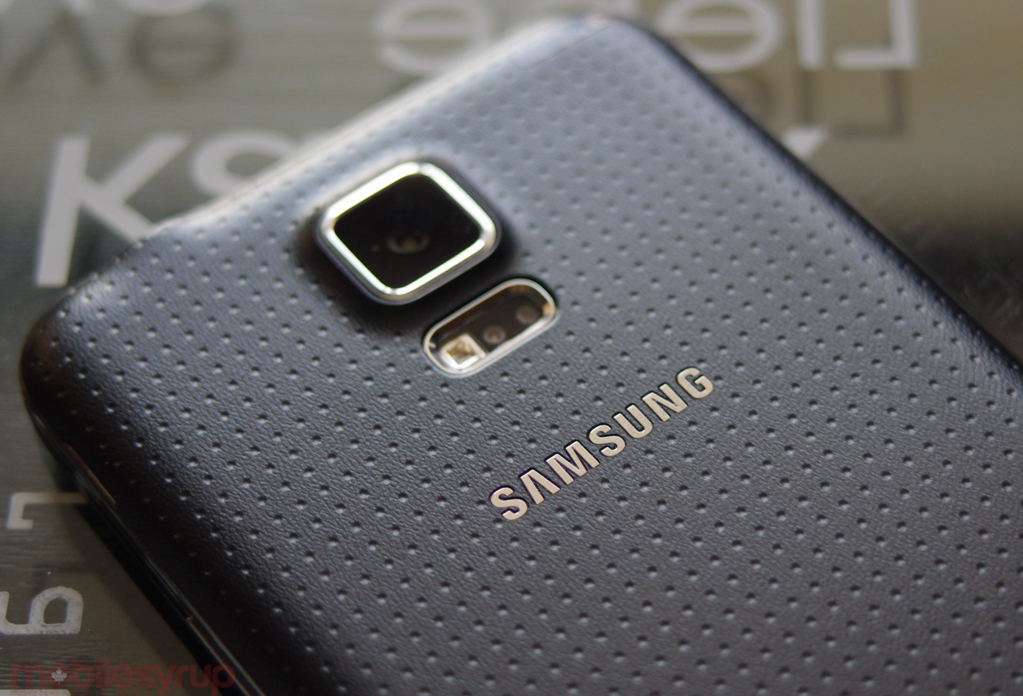
The most immediate competitor to the Z3 is probably the Samsung Galaxy S5. It is water resistant, sports the same processor and storage count, the same version of Android with similar software compromises (though I enjoy Sony’s take on Android more) and a similarly-performing camera.
The S5’s screen is undeniably better, but it’s also AMOLED, so lovers of flatter colours will likely find the Z3’s more pleasing. The Z3’s metal frame is also more akin to the more-expensive Note 4, but then you get into an entirely different size category.

The Z3 is also around the same size as the new Moto X, which has a far better software experience, but lacks the waterproofing and high-resolution camera sensor. Sony’s metal frame feels ever-so-slightly sturdier, but the Moto X’s curvature and soft-touch back makes it easier to grip.

There are other devices, too, vying for your attention in this space. The LG G3 has a bigger, higher-resolution screen, but its battery life and camera don’t quite match that of the Z3.
Similarly, the HTC One M8 shares a lot of its DNA with the Xperia Z3, but its poor camera resolution and continues to be a sore spot months later.
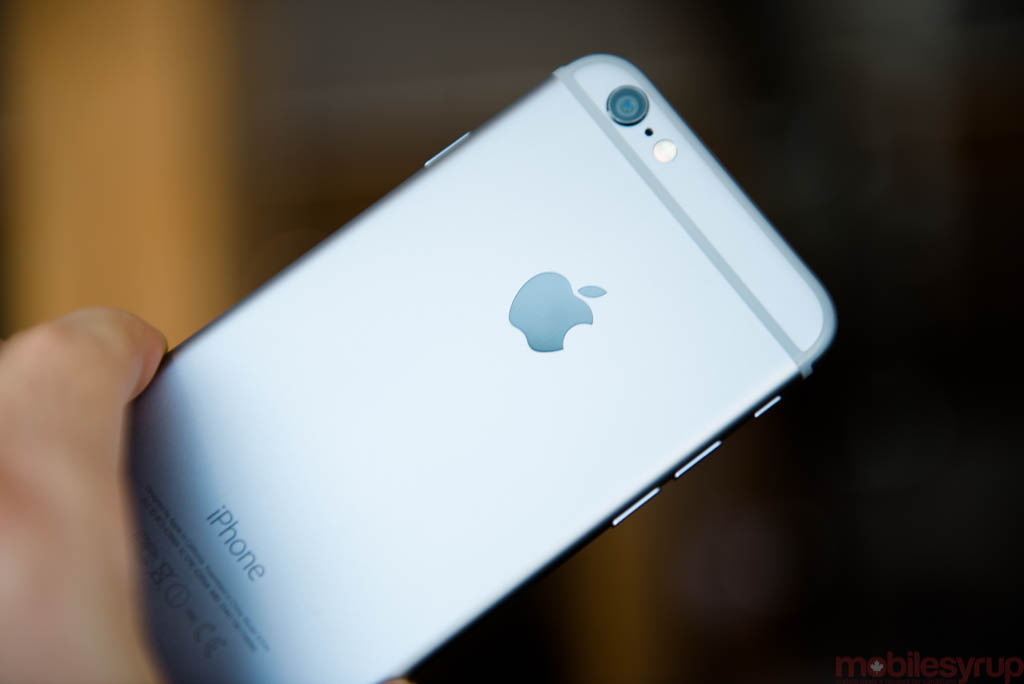
Then there’s the iPhone 6, which has a smaller, lower-resolution screen but feels like the device the Xperia Z3 is attempting most assiduously to be compared to. The Z3 looks, feels and performs like the device Sony has spent years trying to create, repeatedly shut out by a lack of buying power in the high end.
Sony wanted a waterproof smartphone, and worked hard to have that be the differentiator, sacrificing so much — screen quality, size, comfort — in the process. It may seem like Apple and Sony are coming from opposite sides, Sony starting large and shaving off excess and Apple beginning small and slowly adding features, but the intent was to end up in the same place.

The Xperia Z3 Compact has fewer direct competitors, but one might argue that the iPhone 5s, still available for around the same price, is its closest rival. The iPhone has a much smaller screen despite being roughly the same physical size, but its 8MP camera shoots more consistently great photos than the Z3 Compact, and its aluminum backing is not quite as slippery.
It also doesn’t have the same slow update cadence of Sony’s lineup — who knows when we’ll see Lollipop on these devices — and the iOS app ecosystem still can’t be beaten. The Compact, however, does have much better battery life. And that mint green colour option is just awesome.
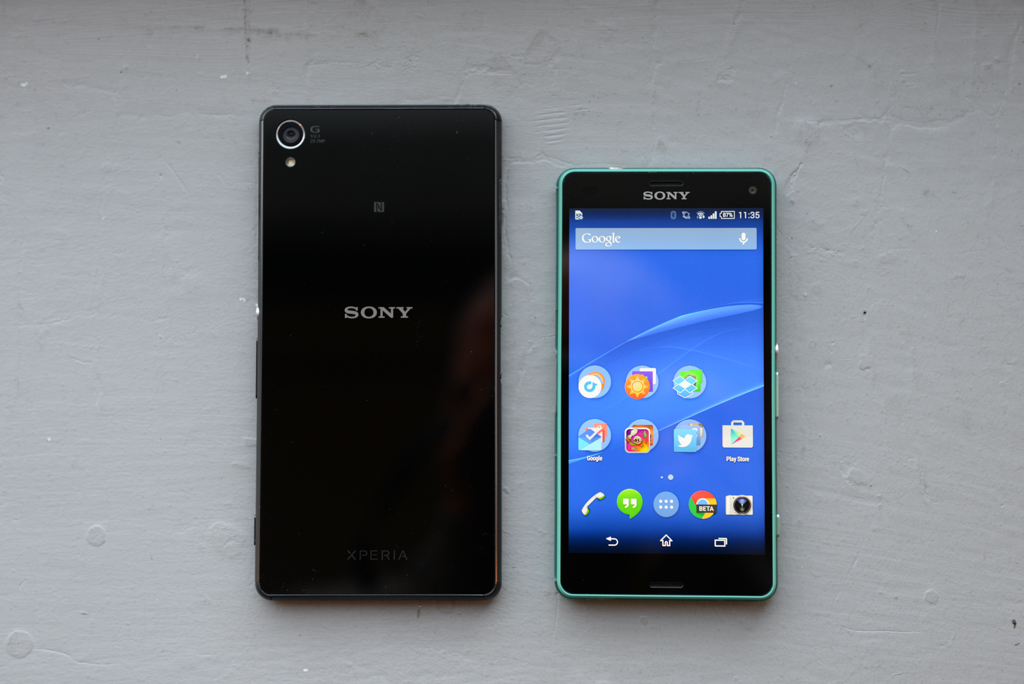
Wrap-up
It’s hard not to love many aspects of the Xperias Z3s, despite the fact that it took Sony so many iterations to get here. They’re the same great products with the same frustrating flaws.
The Xperia Z3 represents an accumulation of everything Sony has done right in the smartphone ecosystem. The minor issues are not overbearing, nor are they unfixable, since most of them are software-related. The screen, camera and battery life are all close to great, bettered cumulatively by many competitors but trounced by no individual smartphone. That makes it one of the better Android devices on the market today.
The Xperia Z3 Compact is, bar none, the best “small” Android phone on the market. Its flaws are more easily forgiven due to the engineering prowess of the thing itself, and the reduction in size feels more like scale than sacrifice.
Sony still has a long way to go toward building beautiful Android software, but at least it’s got the hard part, hardware, down cold. We’ll have to see how long it takes Sony to roll out Lollipop — its software rollout is pretty slow in general — but I have high hopes.
—
*The first version of this review mentioned that the Xperia Z2 had a plastic frame, where in fact in had an aluminum one. This has since been changed. Apologies for the error.
MobileSyrup may earn a commission from purchases made via our links, which helps fund the journalism we provide free on our website. These links do not influence our editorial content. Support us here.

